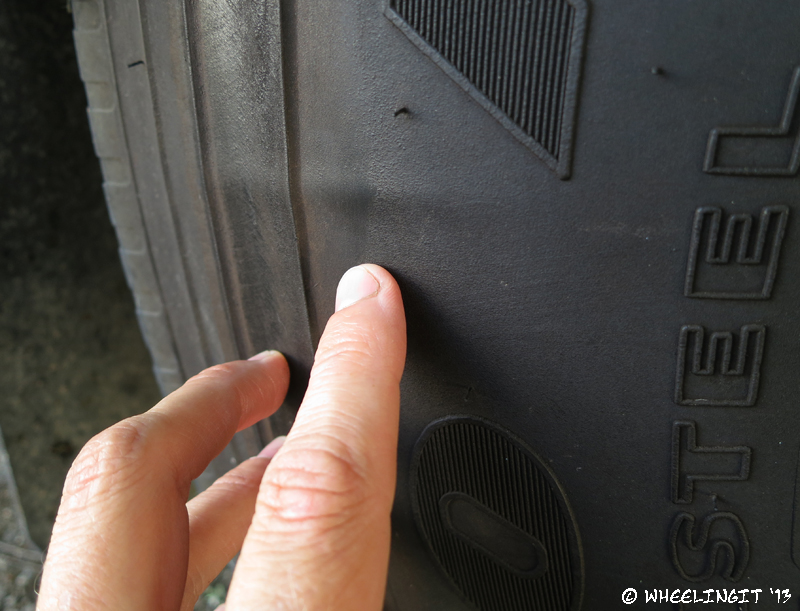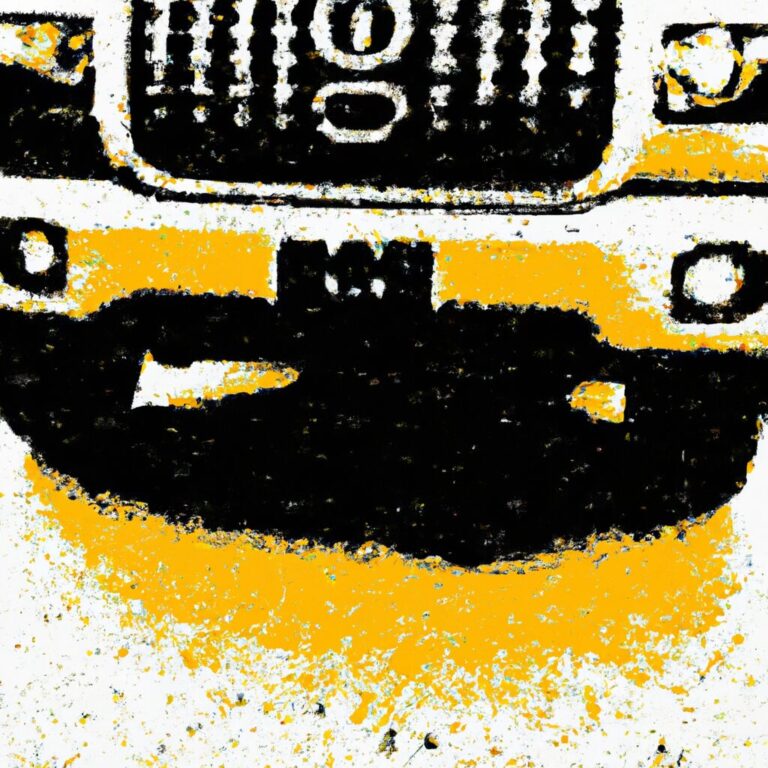How to Tell If You Have a Broken Belt in Tire
To check for a broken belt in a tire, look for bulges or dips in the sidewall or tread, and listen for thumping or vibrating while driving. Tire inspection and proper maintenance are crucial for road safety and vehicle performance.
A broken belt can lead to tire blowouts and compromised handling, posing a serious risk on the road. If you suspect a broken belt, seek professional assessment and consider replacing the tire promptly to prevent potential hazards. Regularly checking for tire damage can help ensure a smooth and safe driving experience.
Ignoring signs of a broken belt can lead to costly repairs and endanger both your safety and that of others on the road.

Credit: m.youtube.com
Signs Of A Broken Belt In A Tire
Tires play a crucial role in the overall performance and safety of a vehicle. They provide traction, stability, and support the weight of the vehicle. However, over time, tires can develop issues that affect their integrity, such as a broken belt. A broken belt in a tire can lead to various problems, including compromised handling and increased risk of a blowout. To ensure your safety on the road, it is important to be able to identify the signs of a broken belt in a tire promptly.
Unusual Tire Wear Patterns
One of the key signs that indicate a broken belt in a tire is unusual wear patterns. When a belt within the tire breaks, it can cause the tire to wear unevenly. This is often noticeable as irregular wear on the tread. Instead of wearing evenly across the entire surface, you may observe patterns such as smooth strips in the center with more pronounced tread on the edges, known as feathering. In some cases, you may also notice cupping or scalloping, which appear as dips or scalloped edges on the tread. These unusual wear patterns indicate that the tire is not making proper contact with the road, potentially due to a broken belt.
Visible Bulges Or Blisters On The Sidewall
Another telltale sign of a broken belt in a tire is the presence of visible bulges or blisters on the sidewall. A broken belt can cause a bubble-like protrusion to form, usually on the sidewall of the tire. These bulges or blisters occur when the internal layers of the tire separate or shift, which can result from a broken belt. It is important to note that these visible deformities may not always be apparent at first glance, so it is essential to inspect your tires regularly. If left unaddressed, these bulges can weaken the tire’s structure and increase the risk of a sudden tire failure.
To sum up, it is crucial to be able to identify the signs of a broken belt in a tire to ensure your safety on the road. Unusual tire wear patterns, such as feathering or cupping, can indicate a broken belt. Additionally, the presence of visible bulges or blisters on the sidewall is another common sign. Regularly inspecting your tires for these signs and addressing any issues promptly can help maintain proper tire integrity and minimize the risk of accidents or blowouts.
Credit: www.ninjette.org
Symptoms Of A Broken Belt In A Tire
When it comes to maintaining the safety and performance of your vehicle, it’s essential to be aware of the signs that indicate a potential issue with your tires. One common issue that can affect your tires is a broken belt, which can lead to unsafe driving conditions and potential tire failure. Recognizing the symptoms of a broken belt in a tire is crucial for addressing the issue promptly and ensuring the continued safety of your vehicle.
Vibration While Driving
If you notice persistent vibrations coming from your vehicle while driving, it could be a sign of a broken belt in one of your tires. These vibrations may be felt through the steering wheel or the floor of the vehicle, and they are often most noticeable at higher speeds.
Pulling To One Side
Uneven tire wear and pulling to one side while driving could be indicators of a broken belt in a tire. When a tire’s belt is damaged, it may no longer maintain its proper shape and alignment, causing the vehicle to pull to one side during driving.
Methods For Detecting A Broken Belt In A Tire
Regular maintenance and inspection of your vehicle’s tires are essential for ensuring your safety on the road. One crucial aspect of tire maintenance is detecting a broken belt, which can lead to dangerous driving conditions. Here are some methods to help you identify if you have a broken belt in your tire.
Visual Inspection
A visual inspection is the most straightforward method for identifying a broken belt in a tire. Look for bulges, bumps, or dips in the sidewall or tread of the tire, as these are common indicators of a broken belt. Additionally, check for uneven wear patterns on the tread, as this could also signal a problem with the tire’s internal structure.
Using A Tire Pressure Gauge
Utilizing a tire pressure gauge can also help in identifying a broken belt in a tire. Measure the tire pressure and compare it to the manufacturer’s recommended levels. If you notice significant variations in pressure among the tires, it could be a sign of a broken belt affecting the tire’s stability and air retention. Additionally, if there are recurring pressure loss issues in a specific tire, it may indicate an underlying problem such as a broken belt.
Consequences Of Driving With A Broken Belt In A Tire
Driving with a broken belt in a tire can have serious consequences on both your vehicle’s performance and your safety on the road. It’s important to be able to recognize the signs of a broken belt and understand the potential risks associated with driving with this issue.
Increased Risk Of Blowouts
Bold and underline this sentence: A broken belt in a tire significantly increases the risk of blowouts while driving.
A blowout occurs when the tire suddenly bursts while the vehicle is in motion, potentially leading to a loss of control and accidents. A broken belt weakens the structure of the tire, making it more susceptible to punctures, cuts, and sudden air loss, resulting in a blowout. This is especially dangerous at high speeds or on busy highways where a blowout can lead to severe accidents and injuries.
Negative Impact On Vehicle Handling
Bold and underline this sentence: A tire with a broken belt negatively affects the handling of your vehicle.
When a belt in a tire breaks, it loses its ability to provide stability, support, and proper traction. This can cause imbalanced and uneven tire wear, leading to a bumpy and uncomfortable ride. It can also affect the vehicle’s steering responsiveness and overall control, making it harder to maneuver and potentially increasing the risk of accidents, especially in emergency situations.
Bold and underline this sentence: It’s important to address a broken belt in a tire promptly to ensure optimal vehicle handling and safety.
Overall, driving with a broken belt in a tire poses significant risks and should be addressed immediately. The increased risk of blowouts and negative impact on vehicle handling make it crucial to inspect and replace tires as soon as any signs of a broken belt are detected. Regular tire maintenance and careful monitoring are essential to ensure a safe and smooth driving experience.
Preventive Measures For Avoiding Broken Belts In Tires
To determine if a tire has a broken belt, inspect for bulges or uneven wear patterns. Also, check for vibrations or steering issues while driving. Regular maintenance and proper tire inflation can help prevent belt breakage and ensure safe driving conditions.
Proper maintenance and preventative measures are crucial to avoid broken belts in tires. By following the below strategies, you can help extend the lifespan of your tires and ensure a safer driving experience.
Regular Tire Maintenance
- Check tire pressure regularly to prevent overinflation or underinflation.
- Inspect tires for signs of wear such as uneven tread wear or bulges.
- Rotate tires every 6,000 to 8,000 miles to promote even wear and prevent belt damage.
- Ensure proper wheel alignment to prevent excessive strain on the tires.
Avoiding Road Hazards
- Avoid potholes, debris, and sharp objects on the road to prevent tire damage.
- Drive cautiously over speed bumps and curbs to reduce stress on the tires.
- Be mindful of road conditions and adjust driving accordingly to protect your tires.
- Avoid excessive braking and sudden stops to minimize wear and tear on the tires.

Credit: www.facebook.com
Frequently Asked Questions On How To Tell If You Have A Broken Belt In Tire
What Happens If A Belt Breaks In Your Tire?
If a belt breaks in your tire, it can lead to uneven tread wear, vibrations, and a loss of control. It’s important to get the belt replaced to ensure safe driving conditions.
What Does A Broken Belt On A Tire Sound Like?
A broken belt on a tire can sound like a thumping or rhythmic noise. It may be more noticeable at higher speeds and could cause vibrations. If you hear this sound, it’s important to have your tire checked by a professional to avoid potential safety hazards on the road.
How Do You Tell If A Tire Has A Slipped Belt?
You can tell if a tire has a slipped belt by checking for uneven wear or bulges on the tire’s surface. Look for vibrations or wobbling while driving. If you suspect a slipped belt, have it inspected by a professional technician.
Can You Drive On Tires With Belts Showing?
No, you should not drive on tires with belts showing. It is unsafe and can lead to tire failure or blowout.
How Can I Check If My Tire Belt Is Broken?
To check for a broken tire belt, inspect for abnormal bulges, cracks, or uneven wear patterns on your tire.
What Are Common Signs Of A Broken Belt In A Tire?
Common signs of a broken belt include vibrations, thumping noises, steering pulls, uneven tread wear, and bulging sidewalls.
Why Is It Important To Replace A Broken Tire Belt?
Replacing a broken tire belt is crucial to maintain road safety, prevent blowouts, and maintain optimal handling performance.
Conclusion
To sum it up, identifying a broken belt in your tire is crucial for your safety on the road. By paying attention to signs like vibrations, unusual noises, and uneven tread wear, you can determine if a broken belt is causing these issues.
Don’t neglect these signs; address them promptly by getting your tire inspected and replaced if necessary. Remember, your tire’s condition plays a vital role in your overall driving experience and road safety. So, stay vigilant and take care of your tires for a smooth and secure journey.

